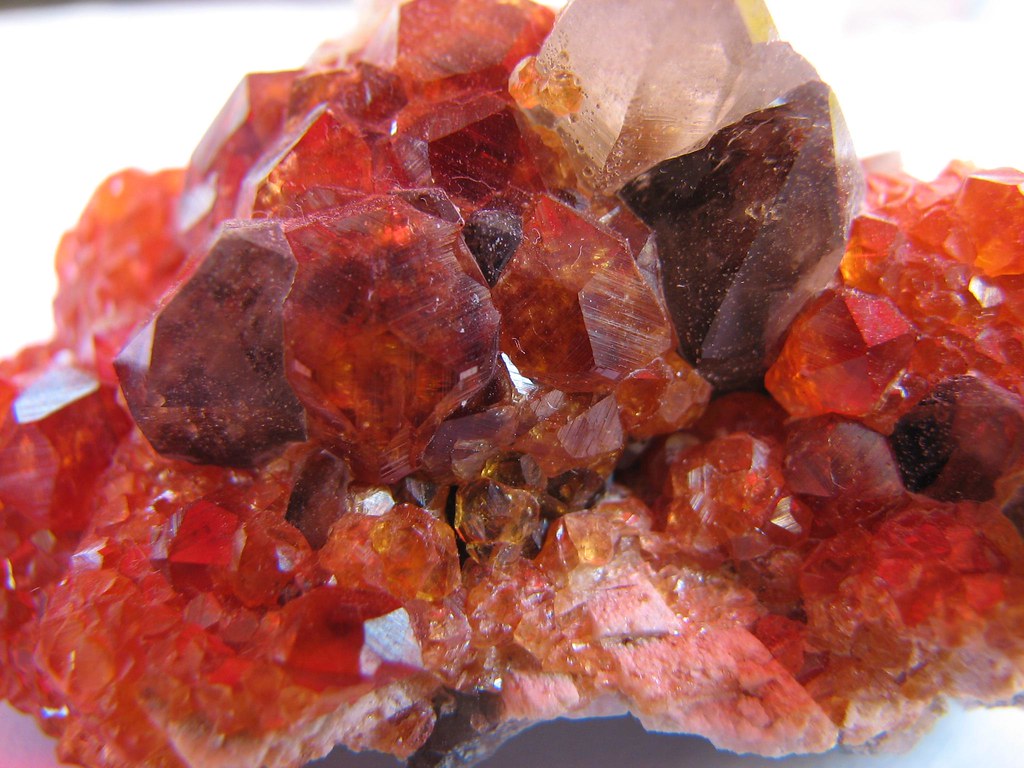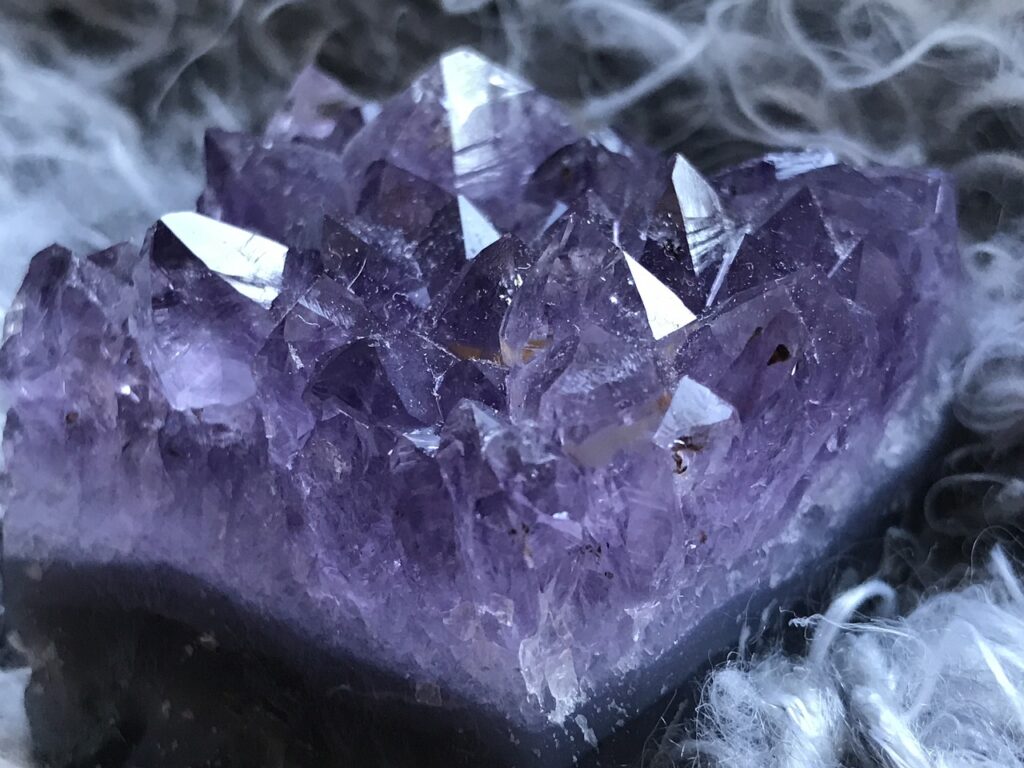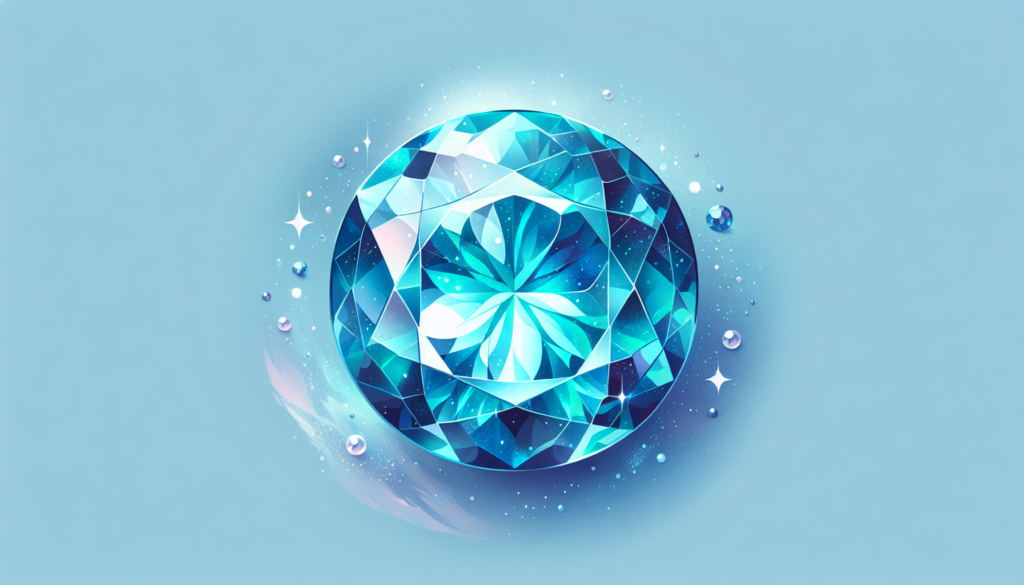Did you know that the birthstone for the month of July is the beautiful Ruby? Known for its fiery red color and stunning brilliance, this gemstone has been cherished for centuries for its symbolic significance and captivating allure. From ancient civilizations to modern-day jewelry enthusiasts, the Ruby continues to hold a special place in the hearts of those born in July, as well as anyone who appreciates its timeless beauty. Let’s explore the fascinating world of July’s birthstone, the Ruby, and discover the rich history and captivating qualities that make it truly remarkable.
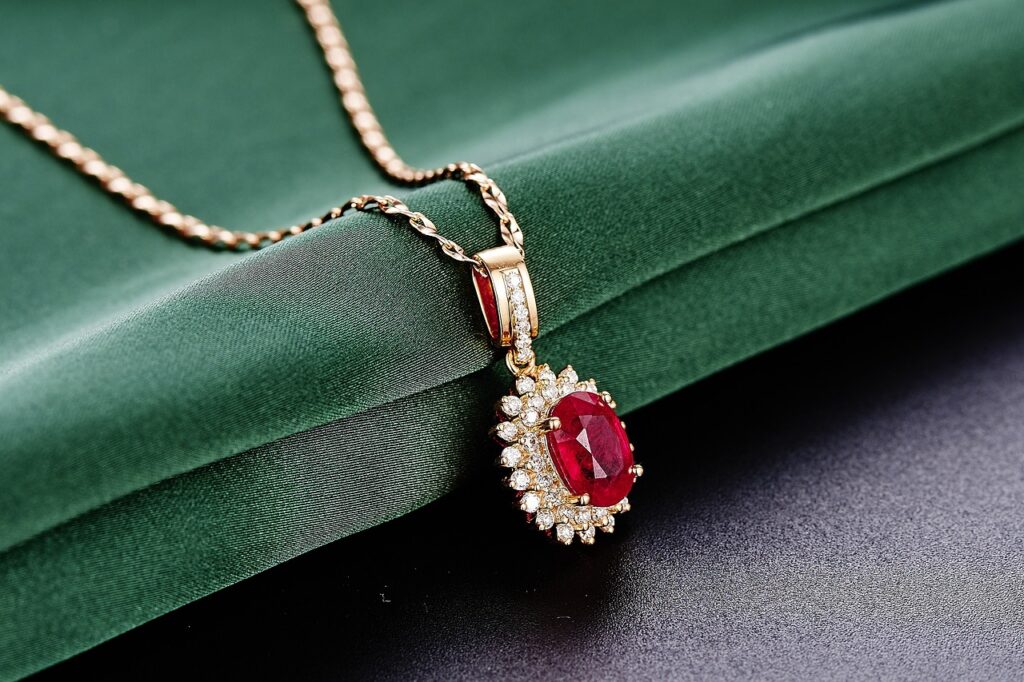
Ruby: The Birthstone of July
General characteristics of rubies
Rubies are precious gemstones that are known for their vibrant red color. They belong to the corundum mineral family, along with sapphires. What sets rubies apart is their rich crimson hue, which ranges from deep red to pinkish-red. The mesmerizing color of rubies is due to the presence of the element chromium in their crystal structure. Other desirable characteristics of rubies include their exceptional hardness, ranking at 9 on the Mohs scale, and their brilliant luster.
Rarity and value of rubies
Rubies are considered one of the most valuable gemstones in the world, often fetching high prices at auctions and in the jewelry market. The rarity of rubies contributes to their high value. Fine quality rubies are scarce, especially those with intense red color and minimal inclusions. The value of a ruby is also determined by factors such as size, clarity, cut, and overall quality. In recent years, the demand for rubies has surged, driving up their prices and making them a sought-after gem for collectors and enthusiasts alike.
Historical significance
Throughout history, rubies have held a special place in various cultures and civilizations. Ancient civilizations believed that rubies possessed magical powers and bestowed blessings upon their wearers. In many cultures, rubies symbolized love, passion, and vitality. Rubies were also associated with royalty and were often worn by kings and queens as a symbol of power and wealth. The allure and significance of rubies have stood the test of time, making them a treasured gemstone with a rich historical heritage.
Symbolic meanings attributed to rubies
Rubies have long been associated with profound symbolism and meanings. They are often viewed as symbols of love, passion, and determination. The deep red color of rubies is seen as a representation of the intensity of emotions and the fiery energy of passion. Rubies are also believed to bring courage, strength, and vitality to the wearer. In some cultures, rubies are considered to be protective stones that ward off negativity and bring good fortune. Their vibrant hue has made them a symbol of power and leadership.
Folklore and mythology surrounding rubies
Throughout mythology and folklore, rubies have been mentioned in various captivating stories and legends. In ancient Hindu mythology, rubies were referred to as the “king of gemstones” and were believed to have been formed from drops of divine blood. According to Burmese folklore, warriors implanted rubies in their flesh to become invincible in battle. In medieval Europe, rubies were associated with the blood of dragons and were believed to protect the wearer from harm. These captivating tales have added to the mystique and fascination surrounding rubies.
Geographic Origins of Rubies
Ruby mines in Myanmar
Myanmar, formerly known as Burma, is renowned for producing some of the world’s finest rubies. The Mogok region in Myanmar has been a significant source of rubies for centuries. The rubies from Myanmar, often referred to as “Burmese rubies,” are highly prized for their deep red color, exceptional clarity, and luminosity. The Mogok Valley is known for its treacherous mines, where miners extract rubies in rugged conditions, sometimes using traditional methods. The rich history and prestige associated with Burmese rubies make them highly sought after by collectors and connoisseurs.
Ruby crystals from Sri Lanka
Sri Lanka, also known as Ceylon, is another notable source of rubies. The island is renowned for its gem-rich lands, including areas such as Ratnapura and Elahera. While Sri Lanka is more famous for its sapphires, it also produces rubies of exceptional quality. Sri Lankan rubies tend to exhibit a slightly pinkish hue, often referred to as “Ceylon pink rubies.” These rubies are highly regarded for their natural beauty and can display excellent transparency.
Thai rubies
Thailand, particularly the Chanthaburi province, has a long history of ruby mining. Thai rubies are known for their intense red color and good clarity. The Thai ruby industry has flourished over the years, with both large-scale operations and artisanal mining contributing to the production of these vibrant gemstones. Thai rubies capture the eye with their rich color and are highly valued in both local and international markets.
Rubies from Africa and Afghanistan
Africa, specifically Mozambique and Tanzania, has emerged as a significant source of rubies in recent years. Rubies from these African regions can exhibit a wide range of colors, from vivid red to purplish-red. The Montepuez ruby deposit in Mozambique has become renowned for producing sizeable rubies of exceptional quality. In addition to Africa, rubies are also found in Afghanistan, where the mines yield rubies with deep red hues. These rubies often have a unique fluorescence that enhances their allure.
Comparison of rubies from different regions
Each geographical region presents its own distinct characteristics when it comes to rubies. Burmese rubies are esteemed for their intense red color, while Sri Lankan rubies showcase a captivating pinkish hue. Thai rubies impress with their vivid red coloration, while African rubies offer a broader range of color possibilities. The uniqueness of rubies from different regions allows for a variety of options when it comes to selecting the perfect stone, catering to individual preferences and styles.
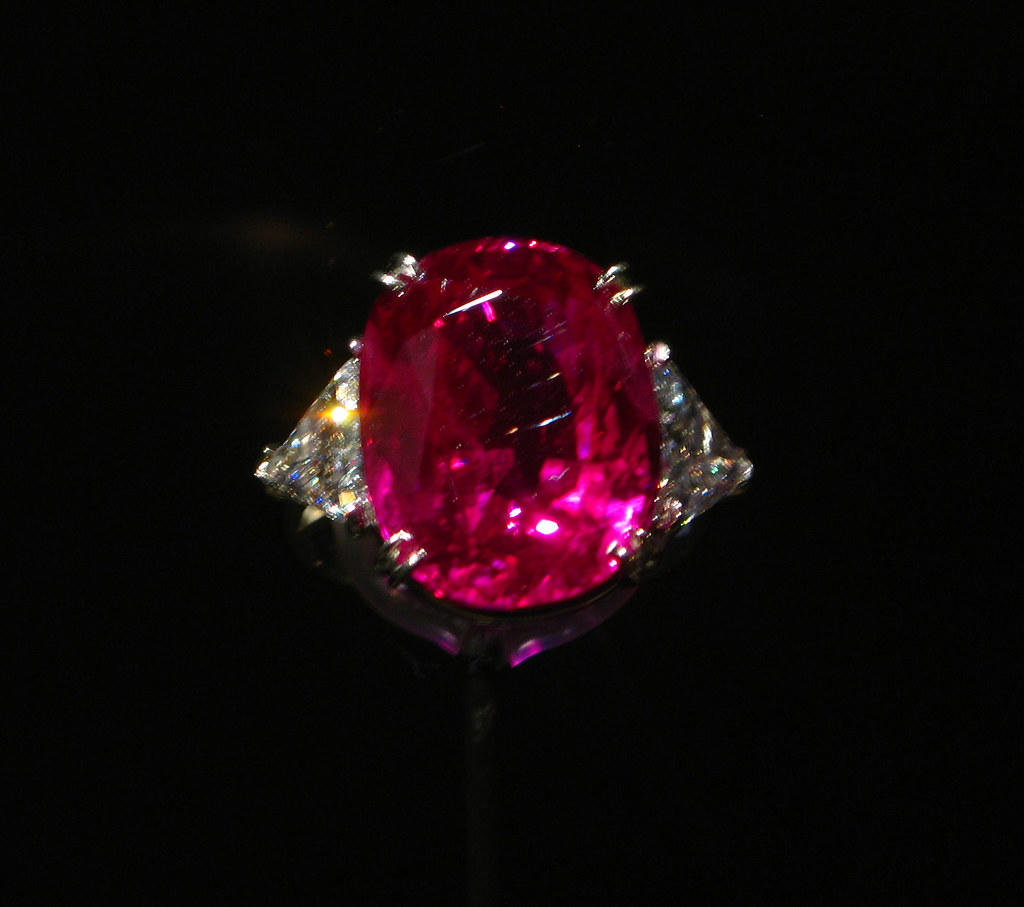
Formation Process of Ruby
Geological requirements for ruby formation
The formation of rubies is a complex geological process that requires specific conditions. Rubies are typically formed in metamorphic rocks, such as marble and basalt, under high-temperature and high-pressure environments. The presence of aluminum, oxygen, and chromium is crucial in the formation of rubies. These elements, combined with heat and pressure, facilitate the transformation of mineral deposits into corundum crystals, giving birth to rubies.
The complex process of crystallization
The crystallization process of rubies is a fascinating journey that spans millions of years. When the necessary geological conditions are met, small traces of chromium and other impurities infuse into the aluminum oxide structure, causing a change in color from colorless corundum to vibrant red. Over time, the corundum crystals grow into larger formations, creating the beautiful gemstones we know as rubies.
Influence of trace elements and impurities
The presence of trace elements and impurities directly affects the color and quality of rubies. Chromium is the primary impurity responsible for the red coloration of rubies. The concentration of chromium in the crystal lattice determines the intensity of the red hue. Other impurities, such as iron and titanium, can also influence the color, clarity, and overall appearance of rubies. These impurities, in the right balance, contribute to the unique and captivating characteristics of each individual ruby.
Timeline for natural ruby formation
The natural formation of rubies is a slow and intricate process that unfolds over millions of years. It begins with the deposition of corundum-rich sediments in the right geological environment. The subsequent metamorphism of these sediments, combined with heat and pressure, triggers the transformation of corundum into rubies. This transformation can take place over a span of several hundred thousand to several million years. The result is a gemstone that displays extraordinary beauty and captures the essence of time itself.
Ruby Quality Classification
Assessing rubies based on colour
Color plays a vital role in determining the quality and value of rubies. The most desirable color range for rubies is vivid red to slightly purplish-red, often referred to as “pigeon blood red.” The hue should be neither too light nor too dark, with a vibrant intensity that captivates the eye. Rubies that display an even color distribution and show no visible zoning are considered more valuable. Natural rubies with an intense and captivating red color command a higher price in the market.
Importance of clarity in rubies
Clarity refers to the presence or absence of internal and external flaws, known as inclusions and blemishes, respectively. Rubies with excellent clarity and minimal inclusions are considered more desirable and valuable. However, it is rare to find completely flawless rubies. Inclusions, such as rutile needles or mineral crystals, may be present, but their impact on the overall beauty and durability of the gem should be evaluated. A balance must be struck between clarity and the other quality factors to determine the overall value of a ruby.
Assessment criteria for ruby cut
The cut of a ruby refers to its shape, proportions, and faceting. A well-cut ruby will exhibit superior brilliance, color saturation, and overall visual appeal. The most common cut for rubies is the oval or cushion shape, as it maximizes the gem’s color and allows for optimal light reflection. The facet alignment and symmetry are crucial in showcasing the natural beauty of the ruby. A skilled lapidary craftsman ensures that the ruby’s cut enhances its inherent qualities, providing a mesmerizing display of color and light.
The weight factor: Carats in rubies
Carat weight is a significant factor in evaluating the value of rubies. Like other gemstones, rubies are measured in carats, with one carat equivalent to 200 milligrams. The price per carat increases exponentially with the increase in carat weight, primarily due to the rarity of larger rubies. It is important to note that the quality of the ruby, including its color, clarity, and cut, must also be taken into consideration alongside carat weight when determining its value.
Impact of treatments and modifications on ruby quality
Ruby treatments, such as heat treatment and filling of fractures, have become prevalent in the gemstone industry. Heat treatment is commonly used to enhance the color and clarity of rubies, making them more visually appealing. However, it is essential to disclose any treatments done to a ruby, as they can affect its value and desirability. Natural, untreated rubies are generally considered to be of higher quality and value, but treated rubies can still exhibit great beauty and be popular choices for jewelry.
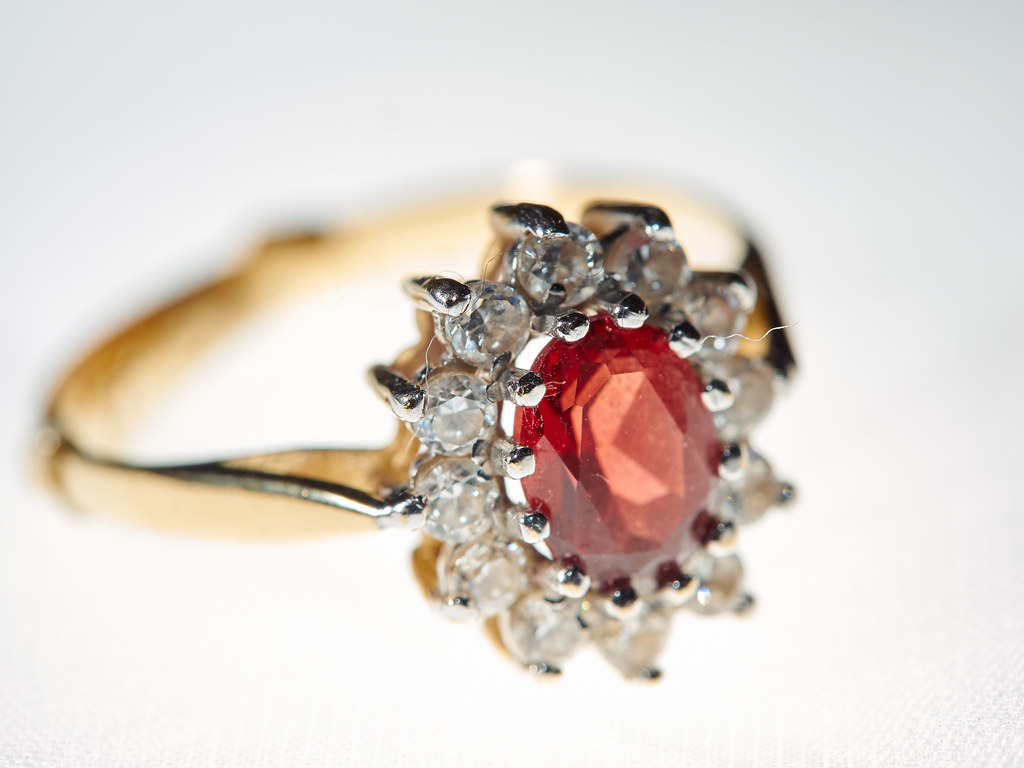
Significance of Ruby in Jewelry
Common uses of rubies in jewelry
Rubies have been used in jewelry for centuries, adorning crowns, necklaces, rings, and other ornamental pieces. Their vibrant color and captivating beauty make them a popular choice for various types of jewelry. Ruby rings, especially engagement rings, symbolize love and passion, celebrating special moments in people’s lives. Ruby pendants, earrings, and bracelets add a touch of elegance and brilliance to any ensemble.
Historical and high-end pieces featuring rubies
Throughout history, rubies have been featured in many famous and prestigious jewelry pieces. One notable example is the iconic “Sunrise Ruby,” a Burmese ruby set in a ring by Cartier, considered one of the most valuable and exquisite rubies in existence. Other historical pieces, such as royal tiaras and crowns, have showcased magnificent rubies, highlighting their association with power and royalty.
Popular style trends with ruby jewelry
Ruby jewelry continues to be a fashion-forward choice, with trends constantly evolving. Classic designs featuring solitaire rubies or rubies surrounded by diamonds are evergreen choices that exude timeless elegance. Modern trends include incorporating rubies into more contemporary and minimalist designs, such as delicate stackable rings or dainty pendant necklaces. Ruby birthstone jewelry also remains popular, allowing individuals born in July to celebrate their birth month with a personal touch.
Maintenance and care for ruby jewelry
To keep ruby jewelry looking its best, proper care and maintenance are essential. Cleaning rubies regularly with mild soapy water and a soft brush can help remove any dirt or residue. It is important to avoid harsh chemicals and abrasive cleaners that can damage the gemstone or its setting. Ruby jewelry should be stored separately from other pieces to prevent scratching. Regular inspections by a professional jeweler can ensure the security of the settings and address any issues promptly.
Rubies in celebrity and royal jewels
Rubies have long been favored by celebrities and royalty, making appearances in their exquisite jewelry collections. From Elizabeth Taylor’s famous ruby and diamond necklace to the ruby-encrusted tiaras worn by royal families, rubies continue to captivate and grace the red carpets and grand occasions. The allure of rubies extends beyond their beauty, often making them the center of attention and a symbol of status and prestige.
Fascinating Ruby Records
The world’s largest recorded ruby
The world’s largest recorded ruby is the “Liberty Bell Ruby,” weighing a staggering 8,500 carats. Discovered in East Africa, this enormous ruby takes its name from its resemblance to the Liberty Bell in the United States. The Liberty Bell Ruby is an extraordinary gemstone, showcasing the immense potential and awe-inspiring size that rubies can reach.
The most expensive ruby ever sold
In 2015, a Burmese ruby known as the “Sunrise Ruby” set a record as the most expensive ruby ever sold at auction. It fetched a jaw-dropping price of over $30 million. The Sunrise Ruby, weighing 25.59 carats, is renowned for its intense pigeon blood red color and exceptional clarity. This remarkable sale further emphasizes the enduring appeal and value of exquisite rubies.
Historic rubies of notable size and quality
Throughout history, significant rubies have left a lasting impression. One such example is the “Black Prince’s Ruby,” which is technically not a ruby but a red spinel. This enormous gem, weighing 170 carats, is set in the front of the Imperial State Crown of England. Its deep red color and historical significance make it a remarkable jewel. Another notable historic ruby is the “Timur Ruby,” a 352.5-carat stone that was once part of the great Mughal Empire’s treasury.
Most unusual ruby gems
Rubies can exhibit unique and rare characteristics that make them truly extraordinary. Among these are star rubies, which show a mesmerizing optical phenomenon called asterism. These rubies display a distinct six-ray star pattern that appears to move across the gem’s surface when properly oriented. Another fascinating variety is the “trapiche” ruby, characterized by a distinctive six-pointed star-shaped pattern reminiscent of a spoke wheel.
Health Beliefs Related to Ruby
Traditional healing properties associated with rubies
Throughout history, rubies have been attributed with various healing properties and believed to possess medicinal value. They were thought to invigorate the body and mind, restore vitality, and boost circulation. Rubies were also associated with promoting mental clarity and improved concentration. In traditional medicine, rubies were often used as a remedy for ailments related to the heart, blood, and energy levels.
Rubies in Ayurvedic and traditional Chinese medicine
In Ayurvedic medicine, rubies are believed to balance the body’s energy centers, known as chakras, and align them for improved overall wellbeing. They are associated with the root chakra, promoting stability and grounding energy. In traditional Chinese medicine, rubies are believed to enhance blood circulation, strengthen the heart, and promote emotional balance. They are also associated with the fire element and are believed to ignite passion and boost energy levels.
Scientific perspective on health benefits of rubies
While the healing properties attributed to rubies have a long-standing cultural and historical significance, scientific evidence regarding their health benefits is limited. The vibrant red color of rubies, however, has been found to have a psychological impact, evoking feelings of energy, passion, and increased motivation. This connection between color and emotions suggests that the visual stimulation of wearing or viewing rubies can have positive psychological effects.
Astrological and Spiritual Properties of Ruby
Ruby as a birthstone for Cancer zodiac sign
In astrology, rubies are associated with the zodiac sign Cancer, which falls between June 21 and July 22. The ruby is believed to amplify the positive traits of individuals born under this sign, such as their nurturing nature, emotional sensitivity, and loyalty. Rubies are thought to provide strength, protection, and passion to those who wear them, while enhancing their natural intuitive abilities.
Ruby in astrology and its planetary connections
Rubies are linked to the Sun and are believed to be a stone of vitality and spiritual radiance. In astrology, the Sun represents the core essence of an individual’s self, creative expression, and life force energy. Rubies are considered to resonate with the Sun’s energy, bestowing confidence, leadership qualities, and enhanced self-esteem on the wearer. The fiery nature of rubies aligns with the Sun’s dynamic and energizing influence.
Ruby’s role in meditation and spiritual practices
Throughout history, rubies have been used in meditation and spiritual practices to enhance focus, deepen spiritual connections, and amplify intentions. Meditating with a ruby is said to activate the root chakra and stimulate the flow of Kundalini energy. It is believed to promote grounding, inner strength, and a sense of balance. The intense red color of rubies is also said to represent the life force energy within all living beings, making them a powerful tool for spiritual growth.
Beliefs about ruby’s influence on emotions and personal traits
Rubies have long been associated with emotions and personal traits. They are believed to promote passion, love, and courage, awakening the heart and igniting feelings of deep affection. Rubies also inspire self-confidence, empowering individuals to take on challenges and embrace their true potential. Their fiery energy is thought to kindle zest for life, revitalize enthusiasm, and bring clarity to one’s goals and aspirations.
Impact of Rubies on Society and Culture
Rubies in film, literature, and popular culture
Rubies have captured the imagination of artists, writers, and filmmakers, appearing in various forms of popular culture. In films, rubies are often depicted as precious treasures or objects of desire, adding intrigue and allure to the storyline. Literature has also featured rubies in famous works, evoking themes of power, passion, and adventure. The prominence of rubies in popular culture has helped cement their status as a symbol of luxury, beauty, and desire.
Cultural ceremonies involving rubies
Rubies play a significant role in various cultural ceremonies and celebrations around the world. In some cultures, rubies are associated with marriage and are incorporated into wedding rituals. They symbolize love, passion, and commitment, representing the enduring bond between two individuals. Rubies are also used in religious ceremonies, where their vibrant red color conveys a sense of divine energy and spirituality.
Historical and cultural significance of ruby colour
The color red, epitomized by rubies, holds immense historical and cultural significance in many societies. Red is often associated with power, strength, and importance. In ancient times, red was seen as a color of protection, warding off evil spirits and bestowing good luck. The deep red color of rubies has reinforced their association with vitality, courage, and leadership. The cultural symbolism attached to the color red continues to shape the perception and value of rubies today.
The Future of Rubies
Current research into ruby formation
Ongoing research into ruby formation aims to deepen our understanding of the geological processes that give rise to these captivating gemstones. Scientists are studying the conditions under which rubies form to gain insights into the factors that influence their color, clarity, and overall quality. This research may enable more efficient mining practices and enhance the ability to predict potential ruby deposits.
Synthetic rubies and the future of the ruby industry
The production of synthetic rubies has gained momentum in recent years and has the potential to shape the future of the ruby industry. Synthetic rubies offer a more accessible and cost-effective alternative to natural rubies while still possessing the striking beauty and properties of their natural counterparts. The development of advanced techniques in creating synthetic rubies may pave the way for increased availability and affordability, allowing a wider range of individuals to enjoy the beauty of rubies in their jewelry.
Sustainable practices in ruby mining and trade
As awareness grows regarding ethical and sustainable practices in the gemstone industry, efforts are being made to ensure responsible mining practices for rubies. Governments, organizations, and mining companies are collaborating to promote sustainable methods that minimize environmental impact and prioritize worker safety and fair wages. Certification systems and traceability measures are also being implemented to provide consumers with reassurance that their rubies have been sourced ethically and responsibly.
Innovations in ruby-cutting and jewelry design
Advancements in technology and cutting techniques are constantly pushing the boundaries of what can be achieved with rubies. Innovative designs and cutting methods are continuously emerging, allowing for the creation of unique and extraordinary ruby jewelry. From intricate faceting patterns to creative settings and combinations with other gemstones, designers are exploring new frontiers in capturing the allure and beauty of rubies.
In conclusion, ruby, the birthstone of July, embodies a timeless elegance and beauty that has captured the hearts of people throughout history. From the fascinating formation process to the significant role rubies play in culture, astrology, and spiritual practices, their allure and symbolic meanings continue to captivate us. Whether coveted for their rarity and value or cherished for their emotional and spiritual significance, rubies will forever hold a special place in the world of gemstones. As ongoing research and innovations shape the future of the ruby industry, we can look forward to a world where rubies will continue to mesmerize and inspire for generations to come.


